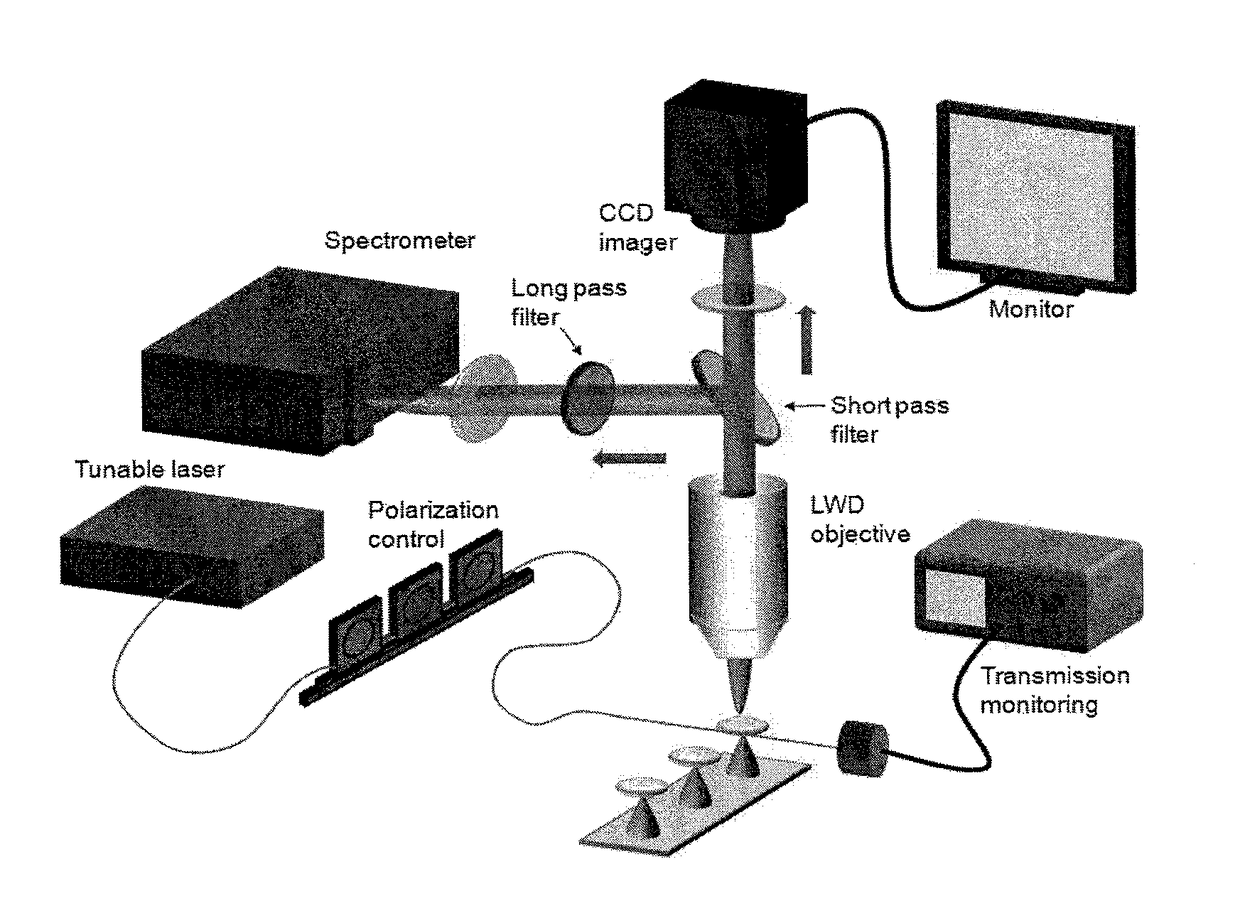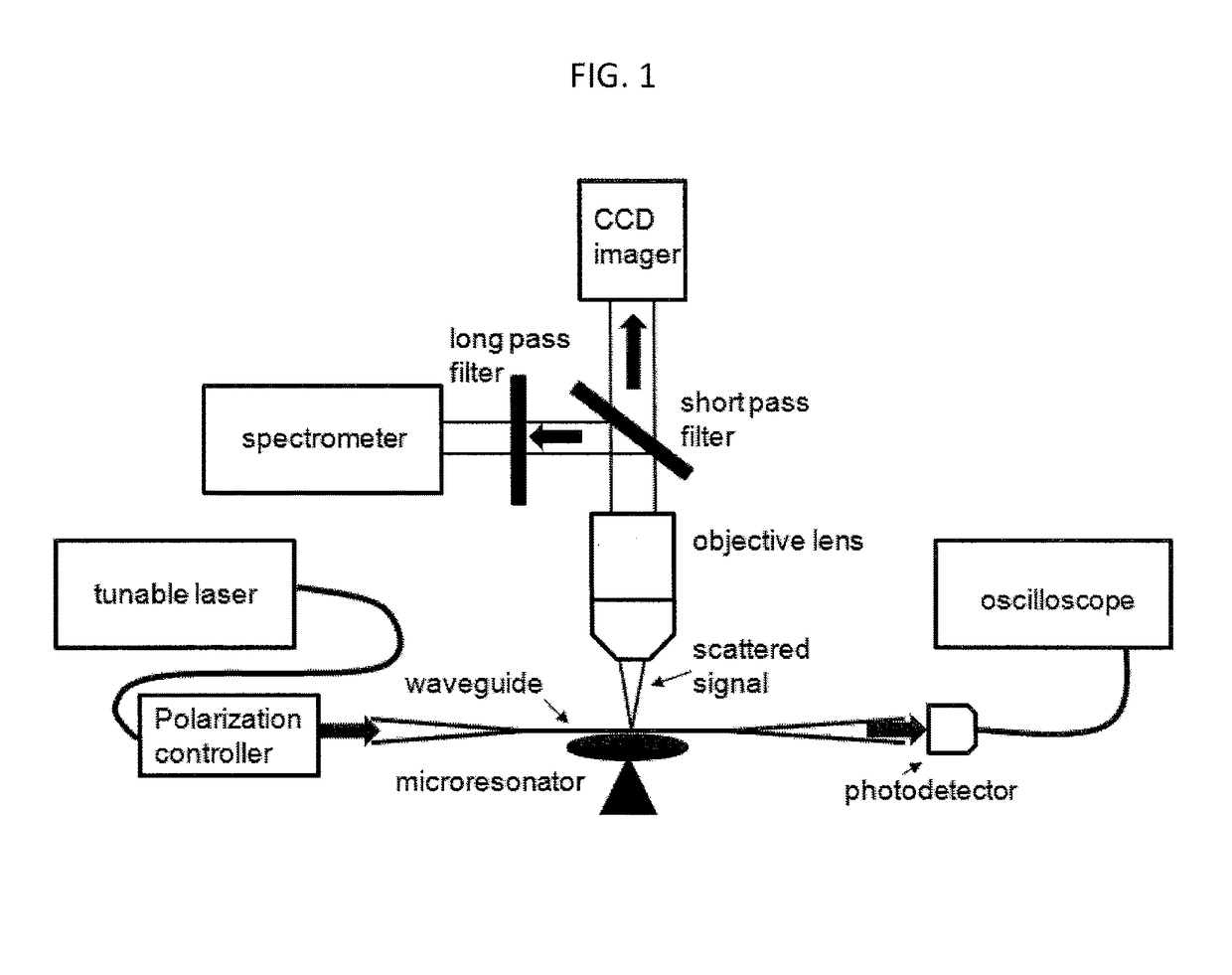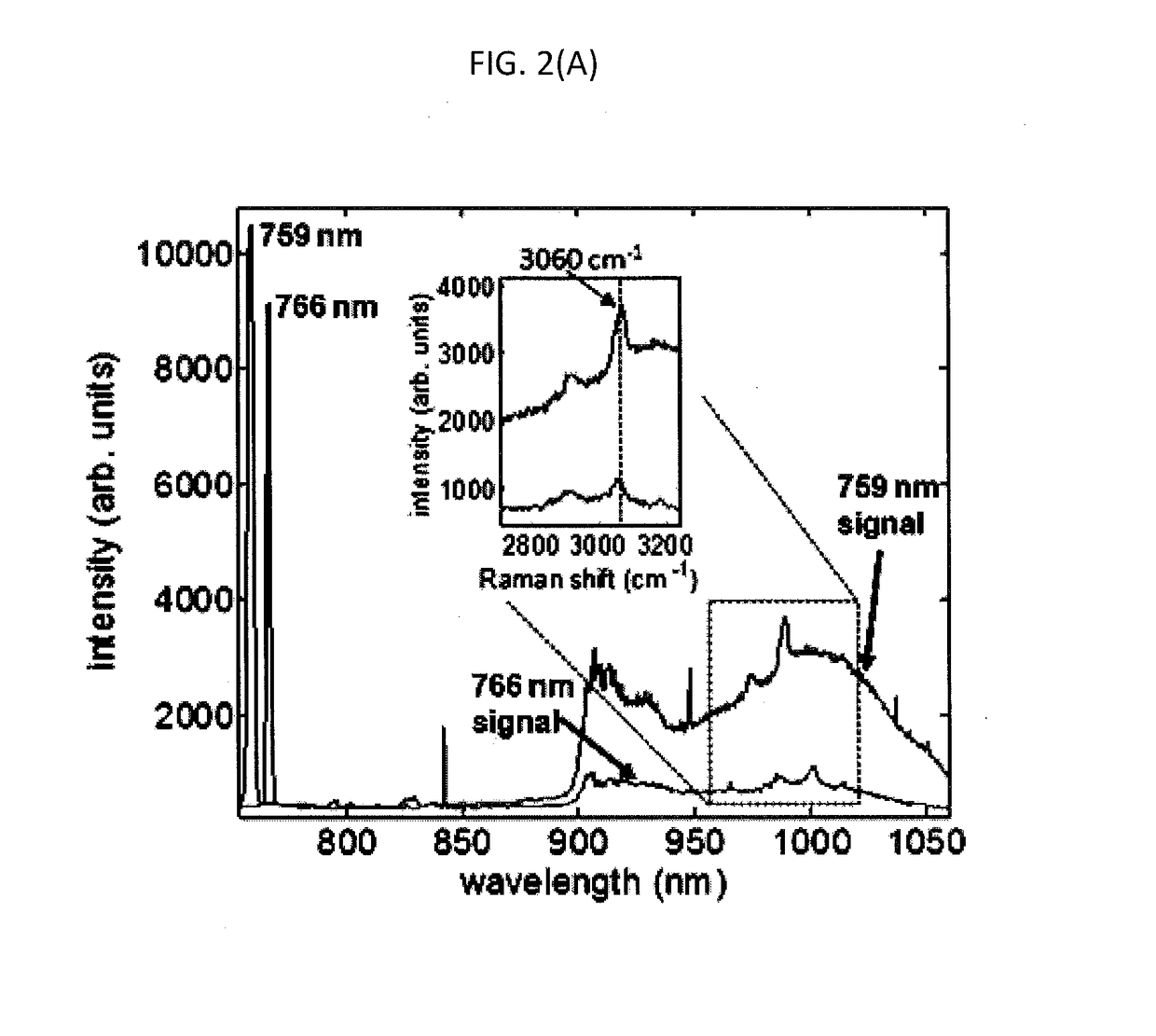Resonator enhanced raman spectroscopy
a raman spectroscopy and resonance technology, applied in the direction of spectrometry/spectrophotometry/monochromators, instruments, optical radiation measurement, etc., can solve the problem of challenging analysis of nanoscale objects such as nanoparticles, biomolecules and proteins in trace amounts, and achieve accurate measurement, raman scattering, and ultra-high quality factor
- Summary
- Abstract
- Description
- Claims
- Application Information
AI Technical Summary
Benefits of technology
Problems solved by technology
Method used
Image
Examples
Embodiment Construction
[0037]Techniques and equipment of the invention may be used with any of a variety of Raman spectroscopy methods and equipment. A number of exemplary embodiments are described below.
[0038]I. General Raman Spectroscopy Using Whispering Gallery Microresonators
[0039]Embodiments provide Raman spectroscopic sensing using whispering gallery microresonators as a label-free method for single particle detection. Whispering gallery mode microresonators are used as platforms to perform sensitive particle detection by exploiting the strong, evanescent field of a resonant mode exposed on the surface of the microresonator. Particles adhered to the microresonator surface interact with the field and scatter photons circulating within the resonator. In particular, Raman scattered photons are detected, providing molecular-specific “fingerprint” information regarding the adhered particles. The exploitation of a resonant mode allows for enhancement of generated Raman signal over traditional methods of s...
PUM
| Property | Measurement | Unit |
|---|---|---|
| diameter | aaaaa | aaaaa |
| pump wavelength | aaaaa | aaaaa |
| wavelength | aaaaa | aaaaa |
Abstract
Description
Claims
Application Information
 Login to View More
Login to View More - R&D
- Intellectual Property
- Life Sciences
- Materials
- Tech Scout
- Unparalleled Data Quality
- Higher Quality Content
- 60% Fewer Hallucinations
Browse by: Latest US Patents, China's latest patents, Technical Efficacy Thesaurus, Application Domain, Technology Topic, Popular Technical Reports.
© 2025 PatSnap. All rights reserved.Legal|Privacy policy|Modern Slavery Act Transparency Statement|Sitemap|About US| Contact US: help@patsnap.com



